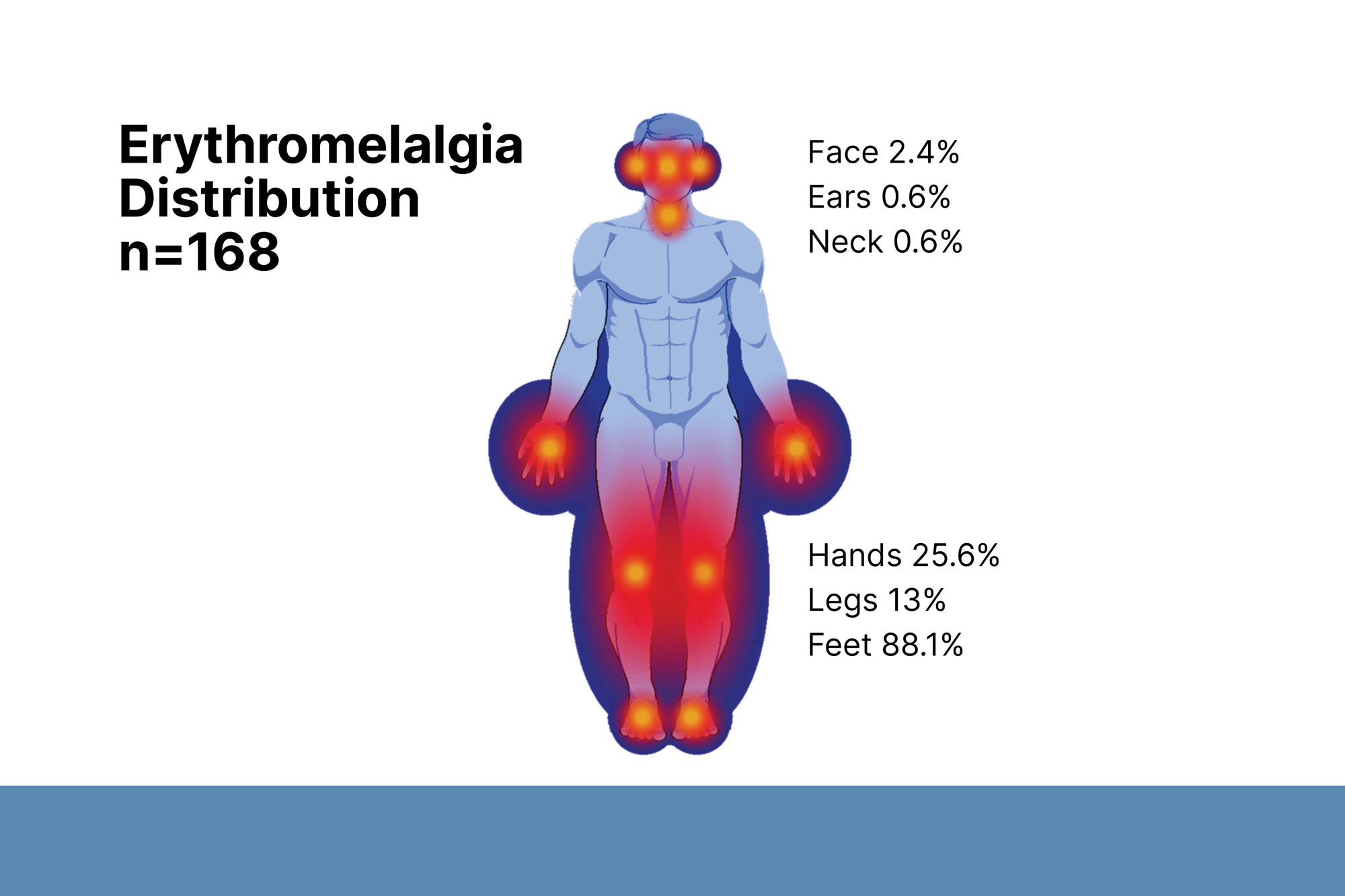The Curious Syndrome of Erythromelalgia
Mark Davis, MD, Chair, Department of Dermatology, Mayo Clinic in Minnesota
December 2022
Dr. Davis presented his medical experiences of patients with erythromelalgia. He typically sees 3-5 new patients with erythromelalgia per week. His first experience was with a patient who had agonizingly painful ulcers on her legs. He met the helicopter-transported patient at the airport. The patient insisted on dunking her painful feet in the airport bathroom toilet to cool them down. Dr. Davis didn’t know it at the time, but it is common for patients who suffer with erythromelalgia to dunk their feet in ice or cold water to help cool down the red, hot feet.
Erythromelalgia is a clinical syndrome characterized by intermittent redness of the hands and feet. The name is derived from the Greek words for “red hot extremities.” The feet are predominantly affected, sometimes involving just the soles, the entire foot; rarely, it extends up the legs. In about 25% of patients, the hands are also affected. Some patients complain of intermittent redness of the ears or face. The underlying cause of erythromelalgia is unclear; it may be a neuropathy or vascular disease, and microvascular arteriovenous shunting may be a pathogenic mechanism. Patients instinctively use various methods to cool their red-hot extremities, including water, fans, ice, and ice substitutes; these behaviors can result in nonfreezing cold injury to the skin with resultant skin damage and ulcerations. Many patients avoid exercise and increased ambient heat to avoid precipitating episodes of erythromelalgia.
For diagnosis of erythromelalgia, Dr. Davis recommends that patients provide photographs of their intermittent, bright, red-hot feet because their feet may look normal upon examination at the time of the patient visit.
There are three main types of treatment: topical, systemic, and rehabilitative. Topical treatments include lidocaine patches or a combination of amitriptyline and ketamine that help relieve the discomfort and pain. A topical preparation of midodrine may be used to treat the redness. Systemic treatments include treatments used for peripheral neuropathies including anticonvulsants and tricyclic antidepressants. A very high dose of intravenous steroids may be used for severe symptoms of sudden onset lasting less than 12 months. A comprehensive holistic pain rehabilitation program can help patients with chronic, severe, recalcitrant disease which is severely impacting lifestyle.
In summary, Dr. Davis considers erythromelalgia to be a chronic pain syndrome. His recommended treatments for managing erythromelalgia include stopping any excessive cooling behaviors and using aspirin, topical treatments, systemic treatments, and pain rehabilitation techniques. These treatments will help patients get their symptoms under reasonable control for a more normal lifestyle.


